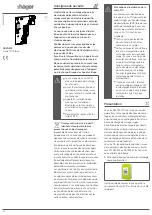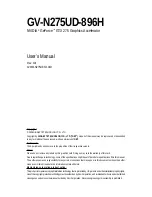
TEI0016 - Jupyter Demo
Copyright © 2020 Trenz Electronic GmbH
6 of 16
http://www.trenz-electronic.de
4.2 Installation of Anaconda respectively
Jupyter
The simplest way to execute the demos in Jupyter is accomplished through the installation of Anaconda.
This will install more than is needed but nearly all requirements in one step.
The Anaconda website provides detailed instructions on how to install the application, just follow this
If the installer offers you the installation of optional applications, just skip those, they are
not needed to run the demos or edit their code.
4.3 Installation of Pyserial
At least with Anaconda installation on Windows,
pyserial
(python serial port support library) is not
included and has to be installed. This can be done from the
Anaconda command prompt
. To open the
Anaconda command prompt, just press the windows key, type Anaconda prompt and open it. Enter
conda install -c anaconda pyserial
into the command prompt an press enter. This starts the search for software dependencies of pyserial,
you are asked to confirm the
installation, to
proceed press Y.
The console shows a message when pyserial is installed and thereafter the console is no longer needed
and can be closed.
4.4 Making the demos accessible for Jupyter
The demo is available through a link in the parent page. The download is a folder, containing all the necessary
files and documents. The
download folder
is compressed into a
zip archive
and need to be extracted, to be
accessible for
Jupyter.
Jupyter has access to the user folder, so a convenient way is to copy the
extracted
demo folder
(TEI001X-0x-08-C8A_Jupyter-ADC-demo_Vx.y_quartusxy.z_...) into your users folder, for example:
C:\Users\Username\
download-folder
4.5
Starting Jupyter
To open Jupyter, press the windows key and
type Jupyter,
this presents "Jupyter Notebook (AnacondaX)" to you,
from which one can start Jupyter.
Jupyter is based on the server client structure, the server is executed in the background, and the client is a webpage
inside your default browser.
So opening it starts the server, which opens a console displaying status messages of the server.
The console must be open all the time, you want Jupyter to run. You can minimize it.


































